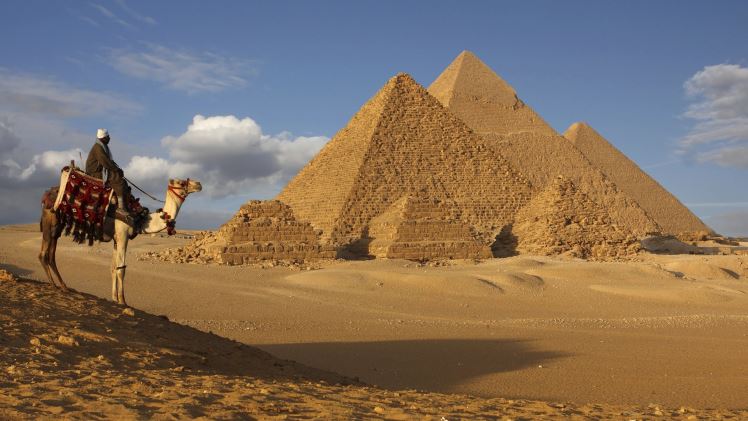Exploring the Magnificent History of the Ancient Egyptian Kingdom

In the annals of human civilization, few cultures evoke as much fascination and awe as ancient Egypt. Spanning over three millennia, the history of the Egyptian Kingdom is a saga of monumental achievements, enduring legacies, and enigmatic mysteries. From the majestic pyramids of Giza to the timeless allure of Cleopatra, Egypt’s rich heritage continues to captivate the imagination of people around the world. In this comprehensive article, we delve deep into the annals of time to unravel the intricate tapestry of the ancient Egyptian Kingdom.
1. The Dawn of Civilization: Predynastic Period (c. 6000 BCE – c. 3100 BCE)
The story of ancient Egypt begins in the fertile Nile Valley, where hunter-gatherer communities thrived along the banks of the river as early as 6000 BCE. Over time, these scattered settlements coalesced into larger villages, marking the transition to sedentary agriculture and the emergence of a distinct culture.
Around 3100 BCE, the unification of Upper (southern) and Lower (northern) Egypt under the legendary king Narmer heralded the beginning of the Dynastic Period. This pivotal event laid the foundation for the first Egyptian dynasty and inaugurated a new era of centralized government and divine kingship.
2. The Old Kingdom (c. 2686 BCE – c. 2181 BCE)
The Old Kingdom is often regarded as the golden age of ancient Egypt, characterized by unprecedented achievements in art, architecture, and monumental construction. At the heart of this period were the pharaohs, revered as divine rulers whose authority was believed to be ordained by the gods.
The Fourth Dynasty, in particular, witnessed the construction of the iconic pyramids at Giza, including the Great Pyramid of Khufu, one judi slot of the Seven Wonders of the Ancient World. These colossal structures served as royal tombs, intended to ensure the eternal life of the pharaoh in the afterlife.
Please Click Here For More Information : summer walker bbl
The Old Kingdom also saw the development of intricate burial customs and religious beliefs centered around the concept of ma’at, or cosmic order. The funerary texts known as the Pyramid Texts provided guidance for the deceased pharaoh’s journey to the realm of the gods, emphasizing the importance of piety and moral righteousness.
3. The Middle Kingdom (c. 2055 BCE – c. 1650 BCE)
Following a period of political fragmentation and instability known as the First Intermediate Period, Egypt experienced a revival of centralized rule during the Middle Kingdom. The pharaohs of the Twelfth Dynasty embarked on ambitious public works projects, including the construction of irrigation systems and the expansion of trade networks.
Art and literature flourished during this period, with notable achievements such as the Tale of Sinuhe, a literary masterpiece that reflects the values and ideals of Middle Kingdom society. The period also witnessed the rise of a new genre of funerary literature known as the Coffin Texts, which provided instructions and spells to assist the deceased in the afterlife.
Despite its cultural and economic prosperity, the Middle Kingdom eventually succumbed to external threats and internal strife, leading to the onset of the Second Intermediate Period. Click here for more information shayari
4. The New Kingdom (c. 1550 BCE – c. 1070 BCE)
The New Kingdom is widely regarded as one of the most illustrious periods in Egyptian history, marked by military conquests, territorial expansion, and unprecedented wealth and power. Under the leadership of pharaohs such as Ahmose I, Hatshepsut, Thutmose III, and Ramesses II, Egypt reached the zenith of its imperial glory.
Military campaigns against foreign adversaries, including the Hyksos in the north and the Hittites in the east, expanded Egypt’s borders to their greatest extent, encompassing territories from Nubia in the south to the Euphrates River in the north.
The New Kingdom also witnessed remarkable cultural achievements, including the construction of grand temples such as Karnak and Luxor, the prolific production of exquisite art and statuary, and the development of an elaborate funerary cult centered around the worship of Osiris, the god of the afterlife.
5. Decline and Legacy (c. 1070 BCE – 30 BCE)
Despite its unparalleled prosperity and military might, the New Kingdom eventually succumbed to a series of internal and external pressures that precipitated its decline. The invasion of foreign powers, internal power struggles, and socioeconomic upheaval eroded Egypt’s stability and weakened its central authority.
The Third Intermediate Period saw the emergence of competing dynasties and the gradual loss of Egyptian sovereignty to foreign invaders, including the Assyrians, Persians, and Macedonians. The last native Egyptian pharaoh, Nectanebo II, was overthrown by the Persians in 343 BCE, marking the end of the traditional pharaonic monarchy.
However, the enduring legacy of ancient Egypt continued to exert a profound influence on subsequent civilizations, including the Greeks, Romans, and later Islamic and Christian cultures. The preservation of Egypt’s monuments and artifacts, coupled with ongoing archaeological discoveries, allows us to roulette online glimpse the splendor and grandeur of this remarkable civilization.
In conclusion, the history of the ancient Egyptian Kingdom is a testament to the ingenuity, creativity, and resilience of its people. From the humble beginnings of a riverine civilization to the heights of imperial glory, Egypt’s enduring legacy continues to inspire wonder and admiration across the ages. As we unravel the mysteries of Egypt’s past, we gain insights into the human experience and the enduring quest for immortality and divine transcendence.



